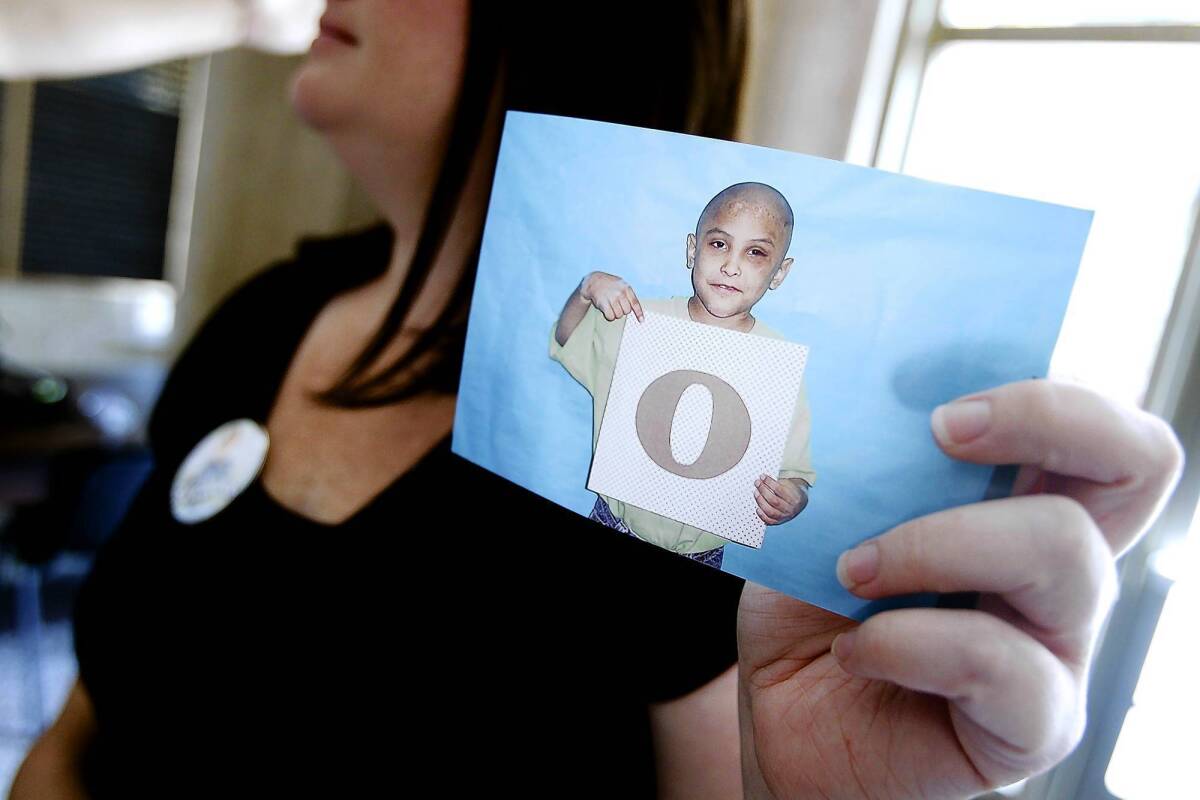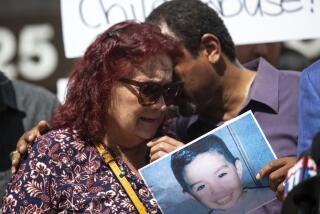To limit child tragedies, give social workers what they need

The first items Nancy Razo pulled out of her binder when we sat down to talk were obituaries of three co-workers who died of strokes that Razo believes were linked to stress on the job.
“These were women who dedicated their lives to public service, to helping kids,” she said.
They were, like her, social workers in the Palmdale office of the Los Angeles County Department of Children and Family Services. Razo thinks they were done in by high caseloads, long hours and constant demands to “get it done now.”
Their deaths feel like collateral damage in a battle against child abuse that only grabs the public’s attention when a child’s death makes news.
The latest child to die was 8-year-old Gabriel Fernandez. Gabriel’s mother and her boyfriend have been charged with torture and murder in his death.
But social workers are being blamed for not recognizing the danger the child faced in a family with a long history of child abuse allegations.
Gabriel had been on the department’s radar for months. When he died in May, he had a cracked skull, missing teeth, broken ribs and BB pellets embedded in his lung and groin.
Four social workers involved in the case have been on “desk duty” in Palmdale since then. But Razo said every social worker feels the weight of young Gabriel’s death.
“They’re all struggling, the entire office,” Razo said. “We know what we do could affect a life; we deal with that every day.
“What happened to these social workers could happen to any one of us any time,” she said. “Maybe they weren’t doing a good job on that case....But you’re focusing on one family and you’ve got 25 others, and something tragic happens.
“We need more social workers and smaller caseloads,” she said. “We’re in crisis mode all the time.”
::
Razo had emailed to complain about a column I wrote about Gabriel’s death, calling for social workers to be held accountable for any missteps.
A social worker since 2005, Razo is also incensed about a memo from agency director Phillip Browning suggesting that a lack of critical thinking and common sense contributed to Gabriel’s death.
That comment hit many social workers I heard from particularly hard. “Having the time to reflect, the time to take in everything you’ve observed… that’s what can save a life,” Razo said.
The day I interviewed her in Palmdale, Razo had spent several hours searching for a foster home for a newborn. Her job is “supposed to be 9 to 5, but some nights I’m out in the field until 10 or 11, then back in the office at 7 a.m,” she said.
Some social workers in her office juggle 30 or 40 cases. The optimal caseload standard is between 12 and 17. Union officials say it would take 1,400 more social workers to adhere to those limits.
Razo walked me through a process spiked with land mines: volatile parents who threaten them, a critical shortage of foster homes, redundant layers of bureaucracy, judges who routinely overrule their recommendations on child custody.
An expansion of parents’ rights and a department philosophy that favors keeping families together have made it harder to justify a child’s removal or collect the information needed to prove abuse.
“Abused kids don’t trust strangers,” Razo said. “And when you’re juggling dozens of cases with crucial deadlines, there’s no time to build the rapport you need to get a kid to talk to you.
“So you go home thinking, ‘Did I do the right thing? Did I ask the right questions? Was I too hard on the mom? Should I give her another chance, or would that child be better off with strangers in a foster home?’
“You always have to choose the lesser of two evils. We’re our own worst critics,” Razo said.
::
My conversation with Razo reminded me of chats I’ve had with teachers over the years.
No matter how many iPads you hand out or what your core curriculum is, if you overload teachers in the classroom, you going to be shortchanging kids.
When you’ve got 40 students in an algebra class instead of 25, some are going to drift and end the semester still trying to figure out what a polynomial equation is.
The same is true for social workers with overwhelming caseloads. But when children fall through the cracks in the child welfare system, someone may wind up dead.
We’re disconnected from that reality in a way we’re not from the parallel problem of classroom overcrowding. If you’ve got kids in school, you have an incentive to pay attention, support their teachers, approve adequate funding.
But foster children don’t have many champions; they’re not much of a constituency. There are no test scores to measure the system by, just the occasional tragedy.
Officials shocked by Gabriel’s death say this may be a watershed moment: The department has just hired 100 new social workers and is planning to hire 150 more. Changes in training and staffing are underway. And the county has appointed a commission to study the department and propose reforms.
But anybody who’s been paying attention has heard all that before. The department has been studied to death, and excoriated over the years for failing to make even basic changes that would safeguard kids.
Nothing changes, Razo said, because no one listens to them. “Social workers’ voices aren’t respected. When we attempt to speak up...we’re labeled as difficult, as lazy, as not disciplined enough, as dumb.”
What she’d like now is for a few of the department’s 3,100 social workers to join the commission, and help those outside experts figure out what’s going wrong.
“We know this is not an isolated incident,” Razo said. “And bashing social workers isn’t going to stop it from happening again.”
More to Read
Start your day right
Sign up for Essential California for news, features and recommendations from the L.A. Times and beyond in your inbox six days a week.
You may occasionally receive promotional content from the Los Angeles Times.






